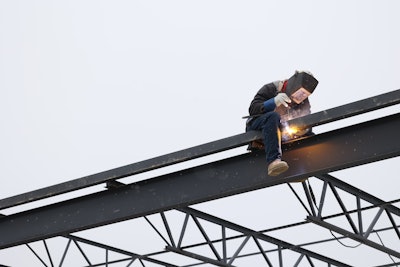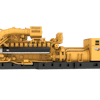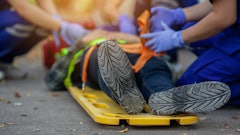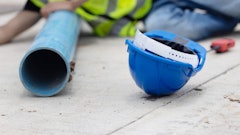
It’s Construction Safety Week, a calendar moment that shines the spotlight on the very important issue of safety on the construction site. I’ll lead with some sobering statistics from the Occupational Safety and Health Administration (OSHA):
- 1 in 10 construction site workers are injured every year
- 150,000 construction site accident injuries annually
- There are nearly 10 deaths annually for every 100,000 full-time construction workers, a statistic that hasn’t gotten better for a decade
- 41% of these deaths are caused by slips, trips, and falls
It’s an issue that we all need to be paying close attention to. And while I’m confident we all advocate for construction safety all 52 weeks of the year, this week presents an opportunity to reflect on key areas that threaten worksite safety, share resources and statistics, and highlight how preventative measures and best practices can improve working conditions for construction pros.
From worksite preparation planning to technology investment to mental health advocacy, here are insights gathered from decades of working with construction professionals to prioritize safety on the job site.
Plan and Prepare for Worksites
Being prepared is necessary to promote worker safety. The use of Pre-Task Planning (PTP) activities can increase worker engagement with safety measures by 94%, reduce recordable injury rates by 84%, and improve productivity by 60%, cutting rework by nearly half and better sticking to scheduling and cost estimates.
PTP activities often include meetings to discuss and identify potential hazards, job site walkthroughs, and breaking up tasks into manageable steps. Making the information readily available and easily accessible helps as well. Supplemental information in pre-task plans most commonly covers specific types of PPE, Equipment, Tools, Materials, Work Schedule, Site Layout, Medical facility location and contact information, and evacuation plan and muster point for emergencies.
It is also effective to incorporate worker feedback, conduct end-of-shift reviews, and train and allow workers to lead PTP meetings themselves. Adding input from additional perspectives and opening leadership opportunities helps boost engagement and understanding of safety measures.
In general, large companies implement higher than average pre-planning and preparation activities and include more supplemental information in pre-task plans compared to small and mid-sized companies. This presents an opportunity for small and midsized companies to improve their worksite safety by increasing their implementation of PTP.
Reduce the Risk of Falls
Falls are the leading cause of fatalities in the construction industry, accounting for one-third of all deaths in construction accidents. Concussions, sprains, impalement, and other injuries can occur when workers are exposed to open walls, floor holes, unprotected sides, open rebar, or misuse of portable ladders and scaffolding.
Protection and prevention of falls are two keys to ensure worker safety. When working at heights and around holes, using fall prevention systems such as guardrails and protective hole covers help defend against falls. When working with portable ladders, ensure the base is secure and that the top gives three feet of clearance over the edge and is adequately secured. Make sure to maintain three points of contact while on a ladder. Do not climb on the supporting cross bars on scaffolding.
Prevent Electrocution Accidents
These three causes combined account for nearly a quarter of deaths in construction accidents. With proper personal positioning and by maintaining visibility, workers should avoid unsafe objects, moving vehicles, and unprotected trenches. Always wear high-visibility clothing near equipment/vehicles and avoid positions between moving and fixed objects. Trenches and excavations should not be entered without protective sloping, shoring, benching, or shielding systems in place.
When working with or around electricity, a good rule of thumb is to always treat the wire as if it were live. Use ground-fault circuit interrupters for protection and ensure portable electric tools are grounded or double-insulated before use. Locate and identify utilities before starting work, and maintain a safe distance from power lines, being especially mindful when operating equipment.
And be alert to potential electrical hazards that could arise when working with ladders, scaffolds, or other platforms. There’s no rule that says that multiple accidents can’t compound.
Invest in Technology
This is one that I’m especially passionate about. Beyond standard worksite safety tips, contractors are increasingly using technology such as ground-level capture, drones, and laser scanning to increase productivity and improve safety.
For residential remodelers and builders, ground-level capture technology like Hover can take advantage of photos from just your phone to create a complete 3D model with measurements, avoiding the need to climb ladders or get on the roof to get measurements.
Related to PTP above, there are also many solutions that allow safety leaders to create digital checklists available on mobile devices in the field. These help to enforce standard operating procedures and provide reporting, creating accountability and improving the adoption of safety standards across the business.
Prioritize Mental Health and Wellbeing
Physical health isn’t the only thing construction pros should be thinking about; mental health is equally important. And they go hand-in-hand; creating a safe worksite can dramatically improve mental health by preventing musculoskeletal injuries. Chronic pain resulting from injuries is a direct stressor that can impact mental health through sleep deprivation, fatigue, and opioid use.
According to the Centers for Diseases Control and Prevention, construction is the No. 1 industry for death by suicide, with suicide accounting for about 5,000 industry deaths per year, compared with accidents accounting for less than 1,000. Further, The National Safety Council reports that 19% of construction workers have a substance misuse issue.
Workers suffering from poor behavioral health increase risks to safety and quality of work, tardiness, absenteeism, presenteeism, and decreased productivity. Beyond the interests in worker well-being, not implementing programs to protect workers’ mental health can present a larger cost to the company.
While 80% of large contractors offer programs for substance use or mental health, only 29% of small companies offer these programs, and 52% of contractors wish they had more resources for managing mental health. For those who don’t know where to start, check out the free resources and expert guides from the Construction Industry Alliance for Suicide Prevention, Associated General Contractors of America, and Construction Suicide Prevention Week.
Regardless of the size of the company and team, worker safety should always be a primary concern. I hope that contractors and job site managers can apply these tips to worksite planning, mentoring and training opportunities, mental health support and awareness, and technology use to improve worksite safety for their crews.



















